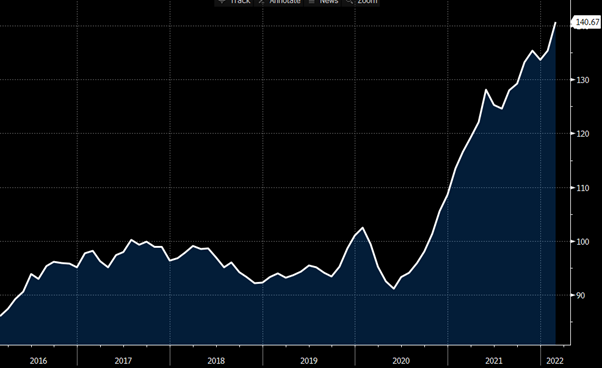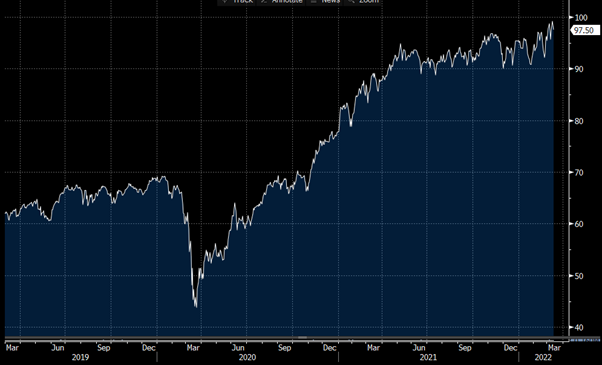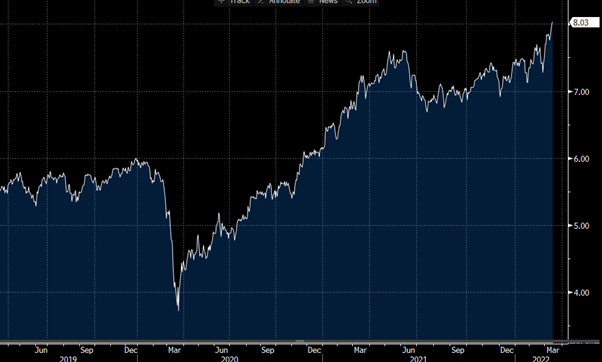Agriculture exposure is something that is overlooked when constructing a portfolio, which is odd, when you consider that agriculture produces the food which everyone looks forward to at breakfast, lunch, and dinner.
In Australia, agriculture contributes 3% (about $50 billion AUD) to GDP, or 12% (about $150 billion AUD) if value adding processes are included (Source: National Farmers Federation).
Globally its estimated that over one billion people work in agriculture, generating $2.4 trillion USD for the global economy (Source: CropLife International A.I.S.B.L.).
Despite this, less than 1% of the S&P/ASX 200 equity index exposure to agricultural companies and many of these have limited investments in agricultural real assets.
Agriculture is arguably the industry with the largest uncontrollable external affects, which can have effects from bumper harvest seasons to failed crops.
It’s an industry that’s at the whim of weather, disease/pests and war.
From ravaging weather ruining a harvest, to rising temperature changing the growth conditions of salmon.
Even something seemingly unrelated – like the war in Ukraine – might have massive implications for agricultural production, with Ukraine being the referred to as the ‘Bread Basket of Europe’.
In 2020, Ukraine produced 18% of the world’s sunflower seed, safflower, and cottonseed oil; 8% of its wheat and meslin; 12% of its barley; and 13% of the world’s corn (Source: International Trade Centre).
Why Ag is growing
Our global population is expected to grow to 8.5 billion by 2030, and the global ‘middle class’ is forecast to increase from 3.7 billion in 2019 to 4.9 billion by 2030.
This will lead to an expected annual consumption of protein per capita increase by 10%, from 41kg to 45kg by 2030.
Back in August 2021, the World Bank noted that a number of countries are already experiencing high food price inflation at the retail level (see below the UN Food and Agriculture World Food Price Index), and during 2020 there was an increase of 320 million people globally who lacked access to adequate food – a figure that is now over 2 billion people, or 30% of the global population.
Chart 1: UN Food and Agriculture World Food Price Index

Source: Bloomberg, as at 15/March/2022
Where the macro-backdrop links to an investment thesis has several layers.
We could start by seeking agri industry exposure as a separate way to diversify investment portfolios from other industries, such as banking and insurance, industrial production, or property developers – to name a few.
But we can also target agribusinesses that exhibit pricing power or inelastic product demand, that will be able to increase their profit margins over time.
Coming back to the protein statistic, if we know that protein sources have finite supply (as present), but that demand for protein is growing faster than supply, then purchasing companies that benefit from the upside of said protein prices, could be beneficial to an investment portfolio.
Planting your seed
There are a number of ETFs that can provide exposure to the broader agricultural sector, for those that are seeking exposure to an industry that has a large impact on their lives:
VanEck Agribusiness ETF (MOO:NYSE)
With $1.1 billion USD under management, MOO is one of the largest agribusiness ETFs available to the market.
The ETF focusses on an exposure of ~50 global companies across; agri-chemicals, animal health and fertilizers, seeds and traits, from farm/irrigation equipment and farm machinery, aquaculture and fishing, livestock, cultivation and plantations (including grain, oil palms, sugar cane, tobacco leafs, grapevines, etc.), and trading of agricultural products.
Chart 2: Price Chart of MOO ETF

Source: Bloomberg, as at 15/March/2022
BetaShares Global Agriculture Companies ETF (Hedged) (FOOD:ASX)
For an AUD-denominated exposure, BetaShares have their FOOD (Hedged) ETF, with a slightly broader portfolio (~70 global companies) across similar sectors as MOO – albeit with a higher weighting to packaged foods and meats.
Chart 3: Price Chart of FOOD ETF

Source: Bloomberg, as at 15/March/2022
In less detail, there’s also many commodity specific ETFs and ETNs available in US markets.
To name some of the larger vehicles:
- Teucrium Corn Fund (NYSX: CORN)
- iPath Coffee Subindex Total Return ETN (NYSX: JO)
- iPath Sugar Subindex Total Return ETF (NYSX: SGG)
If managed funds are more your style, both of the below are accessible for wholesale / sophisticated investors on the Mason Stevens platform;
Warrakirri Diversified Agriculture Fund is a unit trust structure that could be seen as a nuanced agricultural property related investment, where the underlying exposure is to lease terms and agricultural tenants, producers of nuts, fruit vineyards, and livestock etc.
AAM Diversified Agriculture Fund was created to provide wholesale / sophisticated investors diversified exposure to agriculture at scale, with a balance of income and capital growth. It aims to deliver positive outcomes and leadership to the holistic farm sector and regional and rural Australia.
Making hay while the sun shines
Agriculture is an industry exposure that is often left aside, yet one that routinely impacts our everyday life.
Growing populations and rising global living standards support increasing strong demand for agricultural products (food and food production).
With this level of structural growth and increasing demand, it seems a likely investment thesis that the price of agricultural products (and the companies which produce them) will continue to increase over the next few decades, where companies with market & pricing power are able to retain and (hopefully) increase their profit margins.
The views expressed in this article are the views of the stated author as at the date published and are subject to change based on markets and other conditions. Past performance is not a reliable indicator of future performance. Mason Stevens is only providing general advice in providing this information. You should consider this information, along with all your other investments and strategies when assessing the appropriateness of the information to your individual circumstances. Mason Stevens and its associates and their respective directors and other staff each declare that they may hold interests in securities and/or earn fees or other benefits from transactions arising as a result of information contained in this article.



